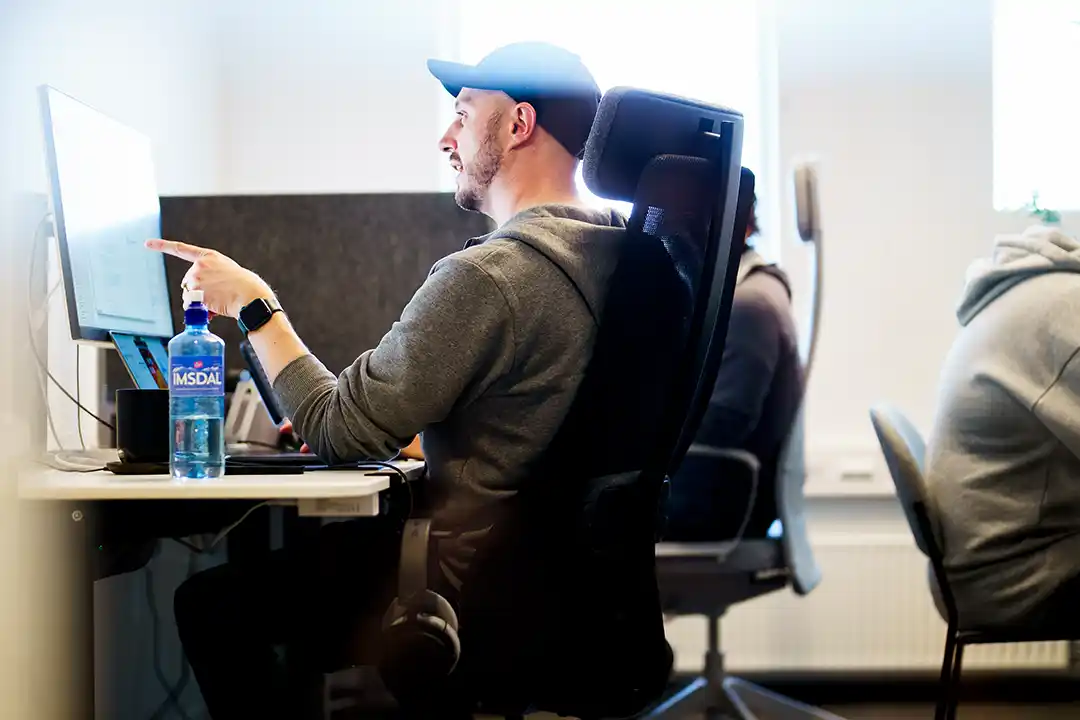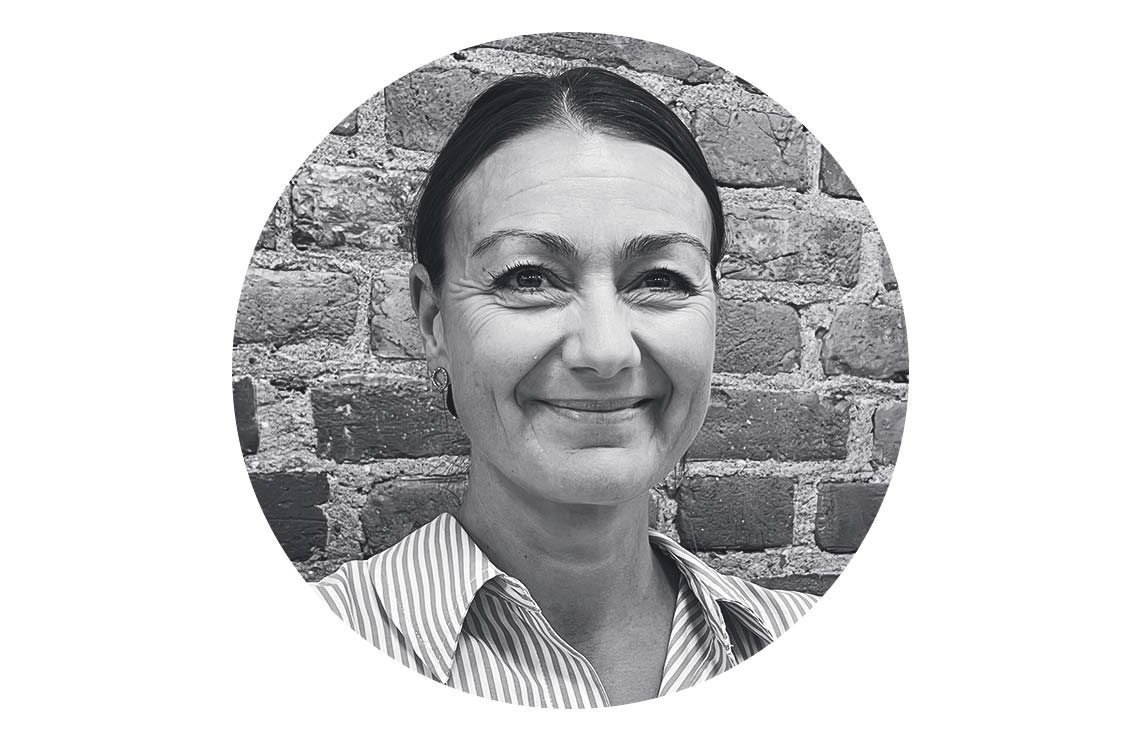Making immersive sound accessible for all listeners
Trondheim-based Nomono’s goal is to make recording just as easy as having a conversation. Now their sound capsule is ready for the market.
By Sylvia Brudeli

Making immersive sound accessible for all listeners
Trondheim-based Nomono’s goal is to make recording just as easy as having a conversation. Now their sound capsule is ready for the market.
By Sylvia Brudeli
The first snow of the season would soon blanket the city of Trondheim. With an intent gaze, Audun Solvang explored the NxtMedia 2016 conference. He was there to listen to the latest buzz in the world of audio and video. New innovations in virtual reality and 360 videos were popping up. And smartphones were on course to replace professional cameras. But it occurred to him that audio was not on par. Both in quality and ease of use. While video production was light years ahead.
With a PhD in 3D audio and ambisonics, Audun saw the untapped potential.
“I knew that If I could put the power of spatial audio in the hands of every content creator, it would transform the industry. In a big way,” he says.
Spatial audio basically means a feeling of the sound coming from all around you. Audun describes the experience as immersive, and then and there on that snowy day in Trondheim, he knew he wanted to make that feeling accessible to all listeners.
With extensive experience in the field, he went back to where he worked, down in the labs at Sintef Digital, an institute that conducts research and innovation in digital technologies and technology-oriented social sciences.

Peter Ringset, from the Nomono team.

Peter Ringset, from the Nomono team.
In 2018, he made a breakthrough with spatial positioning of microphones. Getting really close to the experience he had imagined.
By this time, podcasting was booming and support for spatial audio playback was coming to headphones and speakers. But the big bottleneck was still recording and post-production of spatial audio.
To get things going, he realised he needed help. Audun reached out to his former colleagues and experts in the area – Sigurd Saue and Jonas Rinde – about his idea. At the time, Jonas was CEO at Huddly and Sigurd was an associated professor in music technology at NTNU, the Norwegian University of Science and Technology.
“Audun had no problem convincing me that the project was technically sound and had great potential. The prospect of creating an audio tech company right here in Trondheim was truly appealing,” says Sigurd Saue.
Full perspective
Together, they set up a team of people with different backgrounds and experience levels across signal processing, user experience, consumer electronics and media production, so that they had a full perspective on what needed to be done and which challenges to solve. In 2019, Nomono was born.
From the very start, the goal has been to make recording and sharing stories just as easy as having a conversation. And to make it feel just as natural. The team envisions a new way of producing audio that is intuitive, creative, and connected from start to finish.
“Many challenges exist between recording and publishing. Getting ready and setting up equipment can feel like a time drain. Cables, microphones and obtrusive stands get in the way of natural conversations,” Audun explains.
Helge Berg Bache, Head of supply chain, opens up a Space Recorder.


Helge Berg Bache, Head of supply chain, opens up a Space Recorder.
Being bound to a physical studio can also limit imagination, and laborious editing and audio cleanup can distract the creator from being creative with the content. Faced with heaps of hurdles and complexities, even the most experienced creators sacrifice quality when crafting a story.
These are the fundamental problems that Audun and his team set out to solve.
“The whole idea is that anyone can just bring our kit to wherever you have a conversation, and simply push one button to start recording it.”
Reduces noise
Early 2023, the first Nomono portable kit for recording conversations and interviews in the field was ready for market. It consists of a recorder, four wireless mics, a charging case and access to a cloud service. But a challenging compliance process put sales on hold.
One of the secrets behind Nomono’s high-quality sound is an AI-based denoiser that identifies and reduces background and handles noise. Another AI-based method reduces crosstalk between the voice tracks. And then there’s that issue of spatial sound. Nomono solves that by spreading out voices spatially using localisation data from the mics.
With the Nomono workflow, your stories are also easy to transfer from recording to publishing. When you have finished your recording, all content is automatically uploaded to the cloud service, where you then can choose to enhance or spatialise your audio recording. It solves your needs for basic editing, including adding intros, outros and jingles, making the podcast fully ready for publishing either as a spatial audio podcast or as a normal stereo podcast.
At the beginning of September 2023, the sound capsule was fully compliant and ready for on-demand sale. Since then, Nomono has started to execute on their refined go-to-market strategy, inviting the 40,000 potential customers from their waiting list to finally be able to buy the kit after a long wait.
As a source of extra encouragement, they also won the 2023 SXSW Innovation Award in the audio category at the SXSW tech festival in Austin, Texas.
“With this award, a big milestone in the journey towards our vision of enabling spatial audio for storytellers was reached. A really nice proof that we are doing the right thing,” says Audun.
Beyond the technology, the team is also convinced that storytelling is a powerful thing, and that it connects people.
“Great stories entertain our emotions and expand our knowledge. And it has done so since the era of cave paintings all the way to the rise of podcasting today,” says the Chief Design Officer of Nomono, Viktor Rydal.
Fact
2019 Nomono was founded.
34 people are employed at the company.
Awarded the 2023 SXSW Innovation in the audio category.
Schibsted invested in the company in September 2022.
[Sassy_Social_Share]

Sylvia Brudeli
Chief Product Officer, Nomono
Years in Schibsted: 1
My favourite song the last decade: Smilet i ditt eget speil – Chris Holsten